In 2017, The Economist declared that data had overtaken oil as the world's most valuable resource.
Back then, many were skeptical—but five years later, there’s no doubt that data is a critical part of the foundation for companies succeeding in digital transformation.
At PicoPublish, we help businesses implement PIM solutions that unlock the true potential of their product data.
We structure your data so it can be set free—ready to be used whenever and wherever your customers engage with your brand.
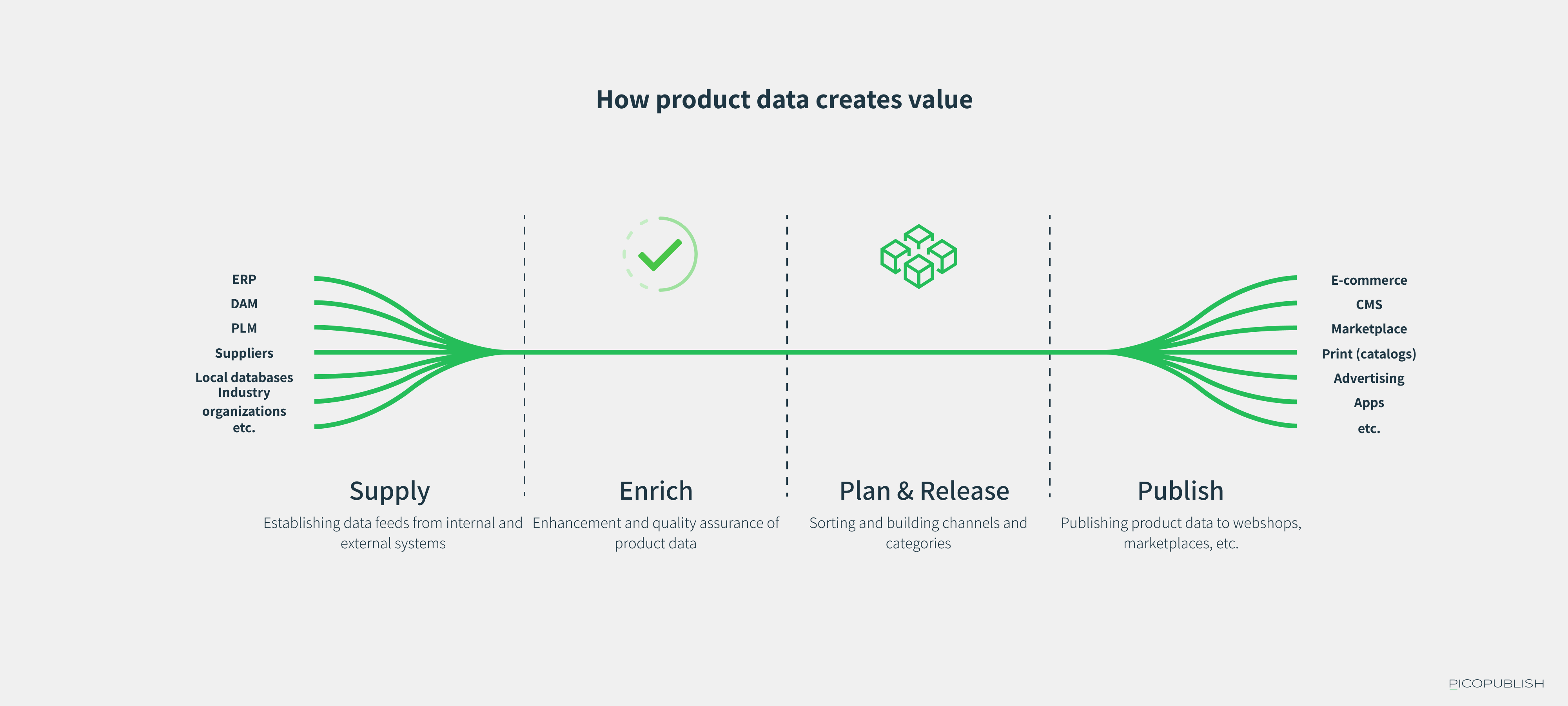

A PIM system provides the necessary overview of your product data to help you realize your digital ambitions and growth strategies.
PIM stands for "Product Information Management" – a system designed to help businesses manage large volumes of complex product information and data.
With more and more consumers shopping online, purchasing decisions are increasingly based on the quality of the product information presented. In other words, the businesses that provide the most complete, accurate, and compelling product data are the ones most likely to win the sale.
A PIM solution makes it easy to efficiently distribute product data to relevant channels – such as suppliers, social media platforms, or your webshop.
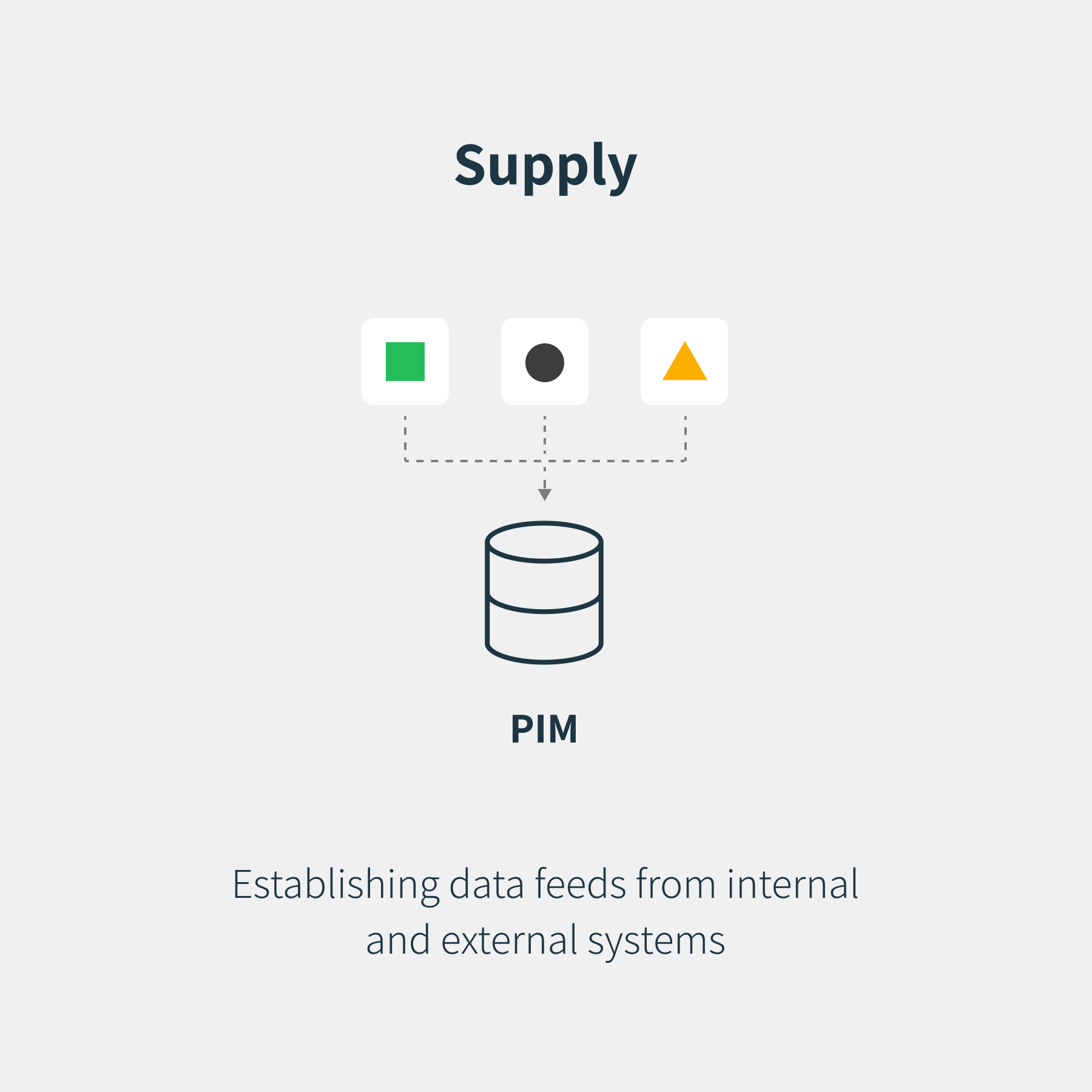
Phase 1 – Establishing Data Feeds from Internal and External Sources
At PicoPublish, we advocate the message: "A Structured Way to Success." In short, this slogan emphasizes the critical importance of Phase 1 — without quality data, there can be no effective use of data.
Phase 1 lays the foundation for future data utilization. Key activities in this phase include identifying the necessary data sources and establishing reliable access to them.
This may involve developing integrations with both internal systems (e.g., ERP) and external systems (e.g., your suppliers’ ERP systems).
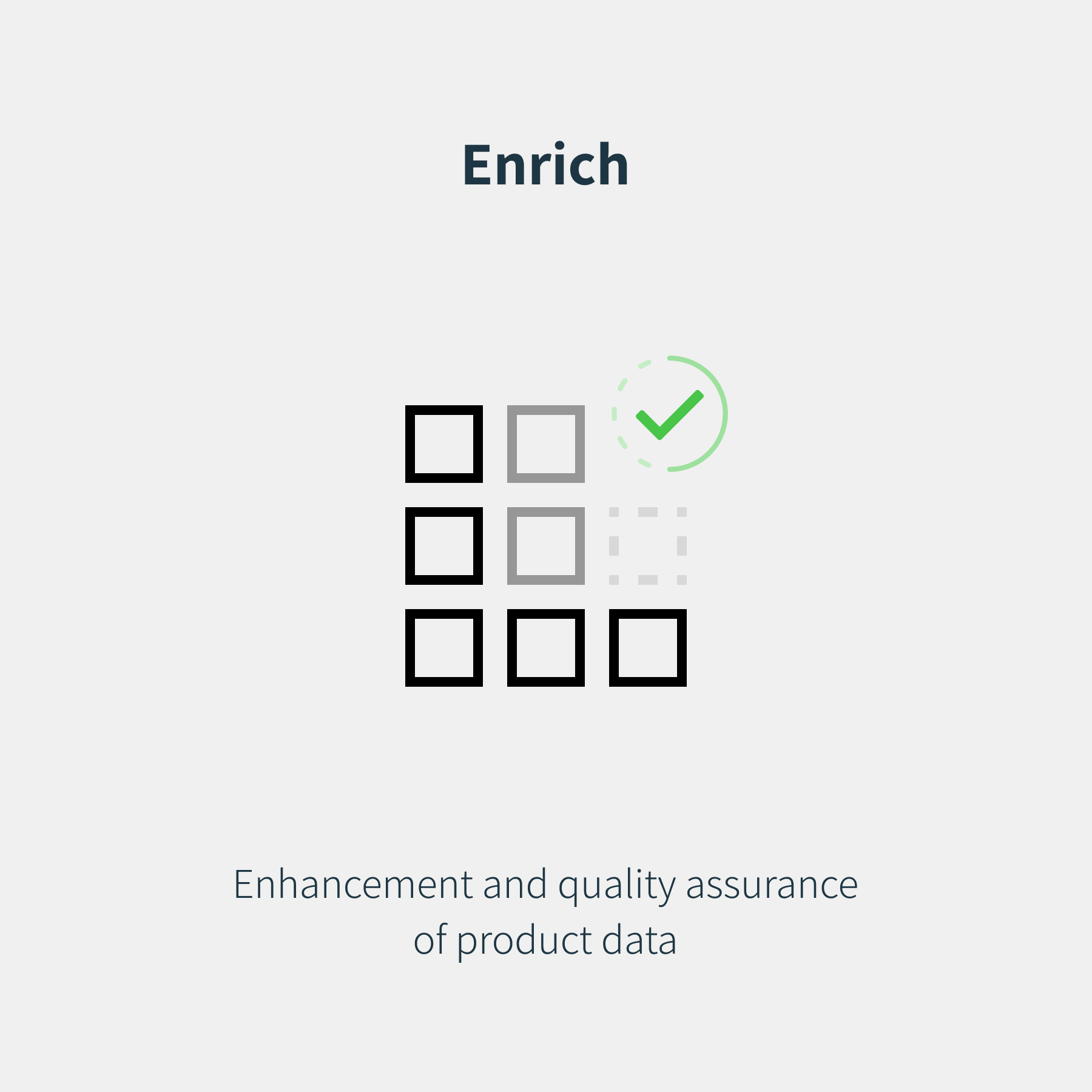
Phase 2 – Enrichment and Quality Assurance of Product Data
Once the right integrations to the appropriate data sources are in place, your PIM solution will begin to take shape. From here, the process of establishing workflows to ensure proper data enrichment begins.
At this stage, some products may still be missing images, descriptions, attributes, or similar information. A PIM system can help identify these errors and gaps in your data, enabling the responsible parties to address and fix these issues.
During this process, there may also be a need to support and develop your suppliers, ensuring that the data they provide meets your quality standards.
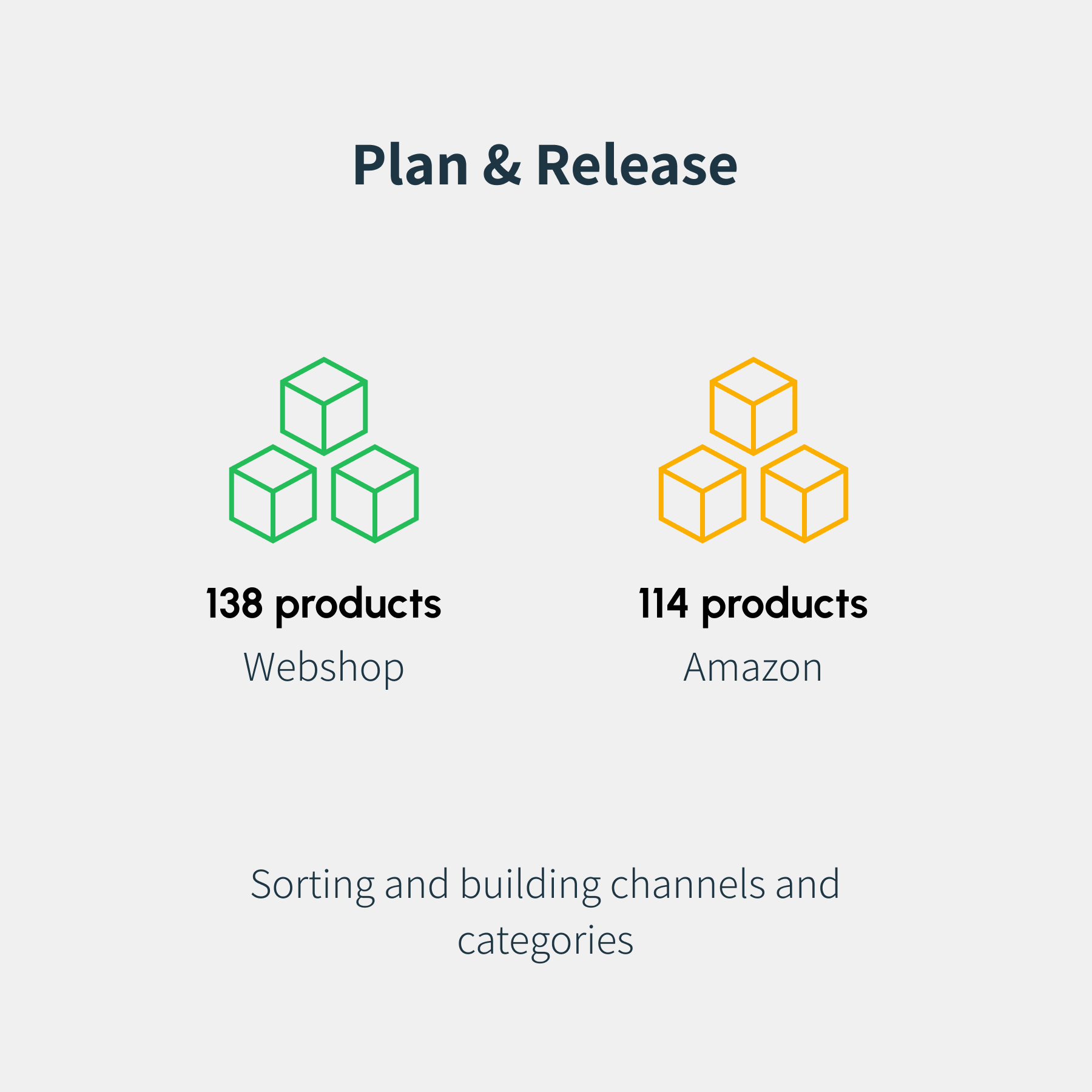
Phase 3 – Organizing and Building Channels and Categories
With product data and data quality under control, the work begins to map out the relevant endpoints.
Some companies may operate with an IT architecture that includes both a webshop and an app. Your PIM system must now be configured to deliver the right data to the right platforms.
Just as there was a need to establish connections to various data sources in Phase 1, Phase 3 requires setting up connections to multiple endpoints.
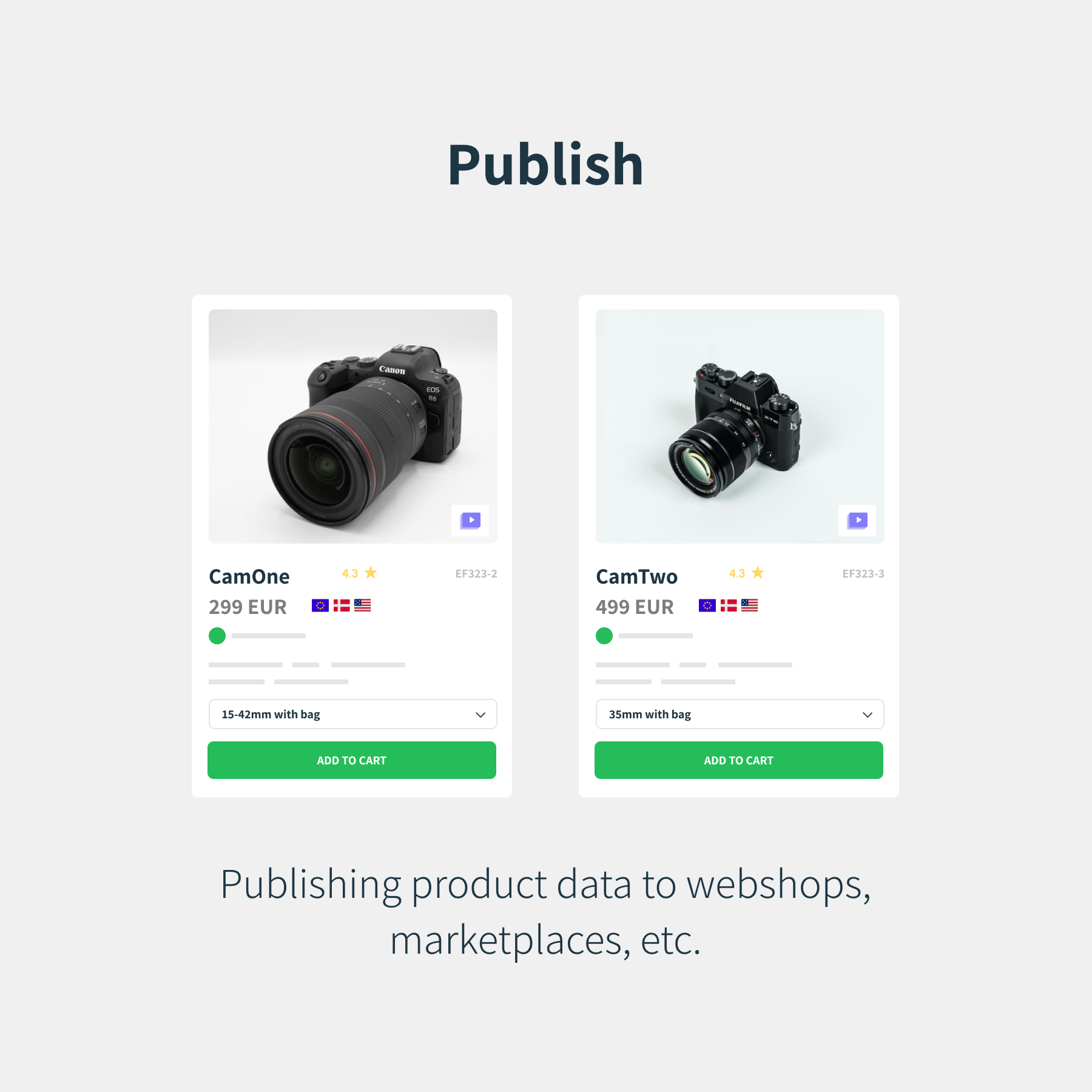
Phase 4 – Publishing Product Data to Webshops, Marketplaces, etc.
Only once your data is published and accessible to your end users can you truly reap its value.
Today, many of us shop online, often buying products without having physically handled them first. This means that your customers are essentially making purchasing decisions based on the product data you provide.
Increasingly, companies that can effectively manage their product data have the opportunity to create a competitive advantage.
Classic PIM use cases
Here’s how we have helped Ilva, Bauhaus, XL-BYG, Invita, and many others create value from structured product data.
Catalogs
Catalogs remain an effective and popular marketing tool. By integrating EasyCatalog software with your PIM system, you can automate large parts of your catalog production, freeing up time to focus on the creative design work.
E-commerce
If you have a complex product catalog with thousands—or even hundreds of thousands—of products and variants, a PIM system is an obvious choice for managing your product data. From the PIM system, data can easily be updated and shared across one or multiple webshops.
CMS/Website
Product data is shared across countless platforms today. If you work with affiliate marketing or need to share product data on online catalogs (not webshops), structured data and a PIM system are once again “must-haves.”
Apps
Apps remain popular tools for sales and marketing teams who need quick access to company products, create quotes, and place orders directly during customer meetings. A PIM system helps ensure a “Single Source of Truth” for all your product data, so your salespeople never have to present outdated materials to customers.

